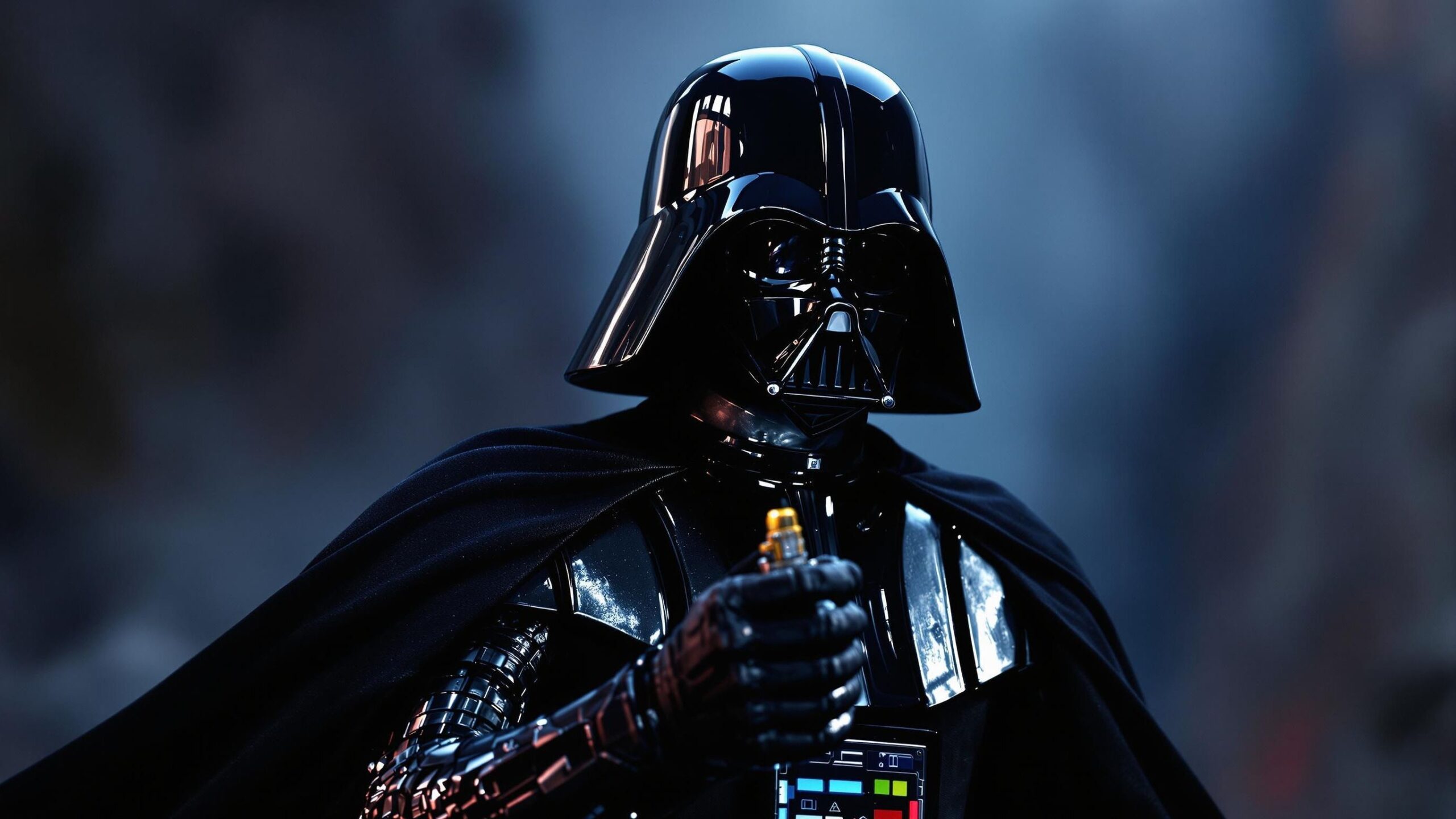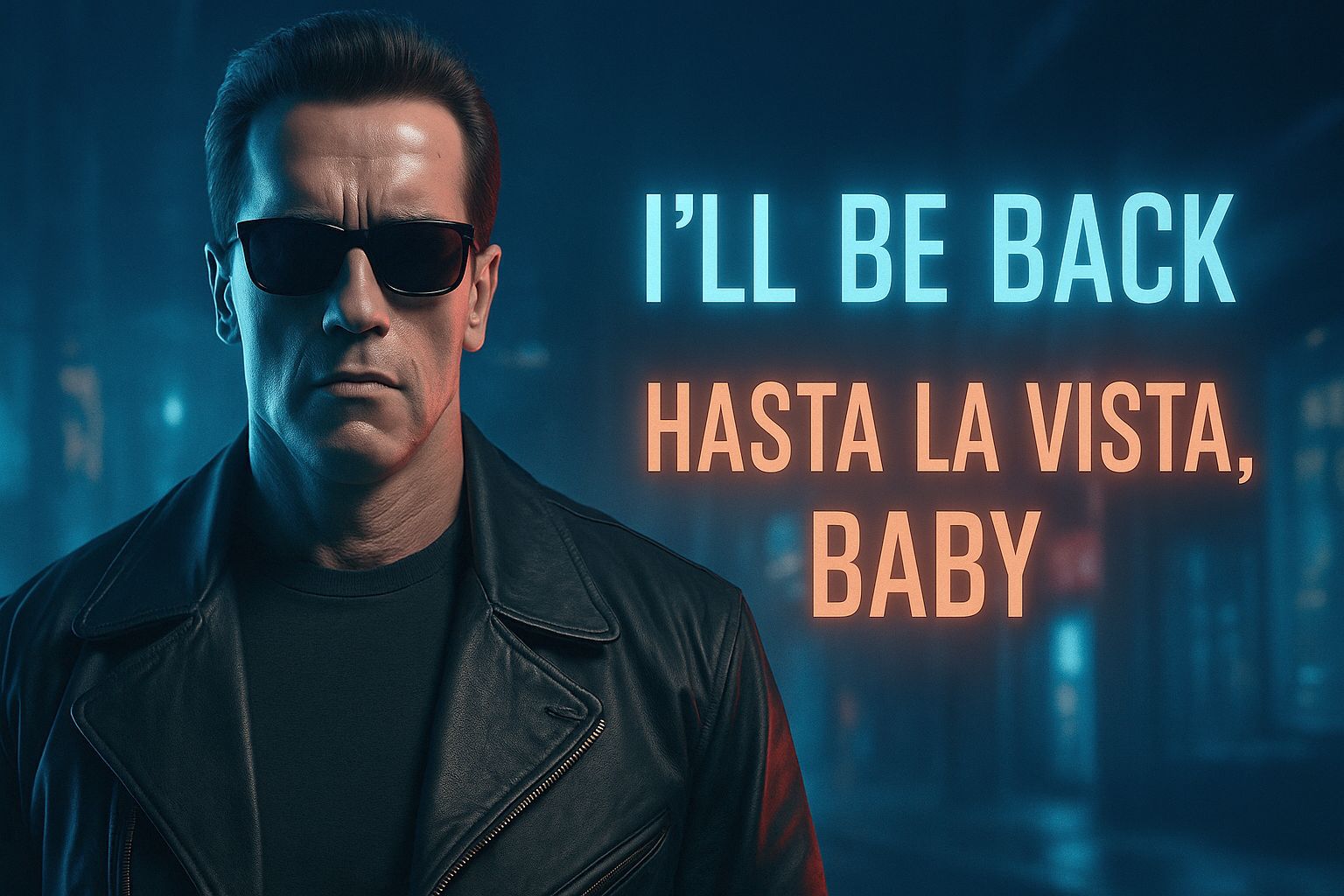The Birth of a Legend in a Galaxy Far, Far Away
Darth Vader didn’t just walk onto the screen in Star Wars: A New Hope—he stormed in with ominous music, a flowing black cape, and the chilling rasp of mechanical breathing that would become an auditory icon. From the moment he appeared, audiences around the world were captivated, frightened, and undeniably intrigued. Created by George Lucas and portrayed physically by David Prowse, vocally by James Earl Jones, and later emotionally by Hayden Christensen, Vader is more than a villain—he is the standard by which all sci-fi antagonists are measured. Whether you’re a lifelong Star Wars devotee or a casual viewer, there’s no denying the dark gravitational pull of this Sith Lord. He’s been terrifying us for decades, and he’s not done yet.
Design That Strikes Fear (and Awe)
Even before he speaks, Vader’s design demands attention. Inspired by samurai armor and Nazi helmets, his jet-black ensemble is both sleek and terrifying, bridging the worlds of ancient warrior codes and futuristic dread. His towering frame, robotic limbs, and that haunting helmet create a silhouette so recognizable that even toddlers can spot him in a lineup of cartoon characters. The glowing red lightsaber, an extension of his rage and power, crackles with menace every time it’s activated. His very presence in a scene shifts the atmosphere—bright rooms feel darker, confident heroes begin to second-guess themselves, and the audience collectively holds its breath. Vader doesn’t just look cool; he looks unstoppable.
The Voice That Echoes Across Time
James Earl Jones didn’t just lend his voice to Darth Vader—he defined it. That low, booming tone combined with the mechanical breathing apparatus forms one of the most memorable sound combinations in cinematic history. It’s hypnotic, commanding, and laced with restrained fury. Every line Vader delivers, from “I find your lack of faith disturbing” to “No, I am your father,” is instantly quotable. His voice isn’t just dialogue—it’s dominance. It silences rooms, commands troops, and delivers devastating truths. You feel Vader in your bones, not just because of what he says, but how he says it. That voice turned him into an icon whose impact reaches beyond the screen and into pop culture’s very DNA.
A Backstory That Broke Our Hearts
What makes Darth Vader truly legendary is that he isn’t just a villain—he’s a tragedy wrapped in armor. Born as Anakin Skywalker, he was a gifted boy with dreams of helping people and making the galaxy a better place. As audiences saw in the prequel trilogy, his descent into darkness wasn’t immediate—it was gradual, emotional, and gut-wrenching. Manipulated by the sinister Emperor Palpatine, haunted by visions of his loved ones dying, and crippled by his own unchecked emotions, Anakin’s fall was a perfect storm of heartbreak and hubris. The moment he becomes Darth Vader isn’t just a turn—it’s a fall from grace. That complexity, that humanity, is what makes him more than a monster. He is pain, power, and pathos fused together.
The Father Reveal Heard Around the Galaxy
The reveal in The Empire Strikes Back— “No, I am your father”—didn’t just change Luke Skywalker’s life; it changed cinematic storytelling forever. It was a twist so bold, so raw, and so unexpected that it became a cultural touchstone. The phrase is misquoted constantly because it’s that legendary. But more than being a great plot twist, it revealed something deeply profound: Darth Vader wasn’t just the ultimate villain; he was also a father. This added a layer of complexity to his character that challenged our assumptions. Suddenly, Vader wasn’t just the obstacle Luke had to overcome—he was the mirror Luke feared becoming. That single moment redefined Vader from a faceless enforcer to a fallen man seeking redemption, and it added emotional weight to every scene that followed.
Redemption in the Face of Darkness
One of the most powerful aspects of Darth Vader’s journey is his redemption. After decades of tyranny, destruction, and fear, Vader makes a choice in Return of the Jedi that echoes through the Force itself. Watching his son be tortured by Emperor Palpatine, Vader doesn’t just stand there—he acts. He lifts the very man who corrupted him and hurls him into a reactor shaft, sacrificing himself to save Luke and the galaxy. This is the ultimate payoff for the tragedy of Anakin Skywalker: a villain who was once a hero, finding his way back to the light at the cost of his own life. Redemption arcs are everywhere in fiction, but few hit as hard as Vader’s. It’s not just satisfying—it’s poetic.
Cultural Impact That Transcends Generations
Darth Vader is more than a character; he’s a symbol. He’s been parodied in comedies, referenced in music, and honored in museums. You can find him on cereal boxes, murals, and even marching in real-life orchestras playing the Imperial March. His story resonates with audiences of all ages, and he’s become shorthand for discussing everything from political corruption to personal trauma. He’s featured in memes, motivational posters (“Come to the dark side, we have cookies”), and countless Halloween costumes. Few villains have the staying power to remain relevant across five decades—and yet, Vader is still the one everyone recognizes and reveres. He’s not just part of Star Wars; he is Star Wars.
Lightsaber Battles That Made Us Gasp
When Vader ignites his lightsaber, you know things are about to get real. His duels are some of the most iconic in the franchise—from his ruthless confrontation with Obi-Wan on the Death Star to the emotionally charged battle with Luke in Empire, every clash is heavy with meaning. And let’s not forget Rogue One, where Vader’s hallway scene stole the entire film. That single sequence, in which he effortlessly mows through rebel soldiers in a corridor of darkness and chaos, reminded everyone why this character is still terrifying. It was the stuff of nightmares, and it reignited our awe for the villain who made fear look graceful.
The Symbolism of the Mask
Vader’s mask isn’t just armor—it’s metaphor. It represents the persona he adopted to survive his pain, his loss, and his betrayal. It’s the wall between Anakin Skywalker’s humanity and Darth Vader’s tyranny. When that helmet is removed in Return of the Jedi, and we finally see the pale, scarred man beneath, it’s one of the most emotional reveals in sci-fi history. He’s no longer the unstoppable force of destruction—we see his fragility, his regret, and ultimately, his love for his son. The moment Luke sees his father’s face for the first time, it feels like an emotional gut punch. It reminds us that even the darkest figure has a human soul buried deep within.
A Presence That Dominates Every Medium
Vader’s influence isn’t limited to the original trilogy. He’s appeared in animated series like Star Wars Rebels, spin-off films like Rogue One, and games like Star Wars: The Force Unleashed and Jedi: Fallen Order. Each appearance adds new layers to his legend. Whether he’s mentoring the Inquisitors or hunting Jedi across the galaxy, his shadow looms large. Even when he’s not on screen, his presence is felt. Kylo Ren, his grandson, practically worships him, and characters throughout the franchise reference him with reverence or fear. No other sci-fi villain has such a massive reach across so many platforms. Vader isn’t just part of the story—he is the story.
Merchandise King of the Dark Side
There’s a reason Vader is on everything from lunchboxes to Lego sets. His image sells because it endures. Kids love his look, teens love his power, and adults love his complexity. You can’t walk into a toy store, comic con, or pop culture event without seeing at least one piece of Vader merch. He’s become a marketing legend, helping Star Wars dominate every generation of fans. But unlike some overused icons, Vader doesn’t feel stale—he feels timeless. That’s the beauty of his character: he can be scary, sympathetic, and super cool all at once, and it never gets old.
The Archetype Every Villain Strives to Be
Since Vader’s rise, countless villains have tried to capture the same magic—some have come close, but none have quite matched him. Whether it’s the cold efficiency of the Borg, the chaos of the Joker, or the cunning of Thanos, sci-fi and fantasy creators always look to Vader when building their big bads. He’s the gold standard, the perfect mix of menace and mystique. Writers often struggle to balance fear with depth, but Vader embodies both. He’s what happens when great storytelling, performance, and design all collide in cinematic perfection.
Legacy in the Force and in Fandom
The legacy of Darth Vader is carved into the very core of Star Wars, and it’s deeply embedded in fan culture. People debate his best scenes, cosplay him at conventions, and theorize endlessly about his psychological journey. Fan fiction, fan art, and entire YouTube channels are devoted to dissecting his choices, his armor, and his family legacy. From Baby Anakin to Force Ghost Anakin, the character has lived many lives, but through it all, Vader remains the centerpiece of the saga. No matter how many new characters the franchise introduces, fans always circle back to the man in black.
The Dark Side of Greatness
What makes Darth Vader the greatest villain in sci-fi isn’t just his appearance, his voice, or even his deeds—it’s his journey. He is the perfect storm of character development, performance, tragedy, and triumph. He’s a cautionary tale and a redemption arc wrapped into one imposing figure. He shows us the dangers of unchecked power and the hope of personal redemption. He makes us fear the dark but also believe in the light. For all these reasons and more, Darth Vader remains the ultimate icon of villainy—and he always will.




